= Copiapoa tenebrosa F.Ritter
Kakteen Südamerika 3: 1098 (1980).
Accepted Scientific Name: Copiapoa haseltoniana Backeb.
Descr. Cact. Nov. 33 (1957). Backeb.

Copiapoa cinerea var. tenebrosa (Copiapoa tenebrosa) Photo by: Raimondo Paladini
Chile, Jannuary 2018
Origin and Habitat: Taltal Chile, Antofagasta, Taltal ad orientem versus, ( Perales mountains and Quebrada San Ramon)
Synonyms:
See all synonyms of Copiapoa haseltoniana
back
Accepted name in llifle Database:Copiapoa haseltoniana Backeb.Descr. Cact. Nov. 33 (1957).Synonymy: 17
back
Description: The Ritter's name Copiapoa tenebrosaSN|1362]]SN|1362]] can be referred to forms within the variability of Copiapoa haseltonianaSN|1380]]SN|1339]]. It can be found in the mountains to the east of Taltal in two adjacent areal: Perales mountains (along populations of Copiapoa cinereaSN|1380]]SN|1380]] var. cinerea) and in Quebrada San Ramon (along with Copiapoa krainzianaSN|1380]]SN|1386]], Copiapoa cinereaSN|1386]]SN|1380]] and Copiapoa cinereaSN|1380]]SN|1380]] var. albispina ). It shows the characters of haseltoniana, but it is probably an hybrid with thinner and lesser evident spines and green to grey epidermis. The form of Q. San Ramon is particularly beautiful with orange wool with yellowish-white spines.
Both Copiapoa cinereaSN|1339]]SN|1380]] and Copiapoa tenebrosaSN|1362]]SN|1362]] in these areas shows great variation and it is sometimes difficult to separate one species from another.
Habit: The plants commonly forming large clumps, branching both basally and laterally, grows slowly up to 70 cm high and 1-3 m in diameter.
Stem: Grey to green 8-20 cm in diameter with woolly ocher-coloured apexes.
Ribs: 13-26, obtuse, 12-15 mm tall.
Areoles: 6-10 mm in diameter, 3-6 mm apart.
Radial spines: 4-6, 5-40 mm long yellowish-white, to honey yellow, glassy, often taking a tan colouring.
Central spines: Subulate, 1(3) 1-4 cm long.
Flowers: 30-45 mm long yellow.
Bibliography: Major references and further lectures
1) Graham Charles “Copiapoa” Cirio Pub. Services, 1999
2) Edward Anderson “The Cactus family” Timber Press, Incorporated, 2001
3) Riha & Subik. “The illustrated encyclopedia of cacti and other succulents” (edited by G. & K.A. Beckett) 1981
4) James Cullen, Sabina G. Knees, H. Suzanne Cubey “The European Garden Flora Flowering Plants: A Manual for the Identification of Plants Cultivated in Europe, Both Out-of-Doors and Under Glass” Cambridge University Press, 11/ago/2011
5) Clive Innes “Complete Handbook of Cacti and Succulents” Van Nostrand Reinhold Company, 01/Dec/1981
6) David R Hunt; Nigel P Taylor; Graham Charles; International Cactaceae Systematics Group. "The New Cactus Lexicon" dh books, 2006
7) N. L. Britton, J. N. Rose “The Cactaceae. Descriptions and Illustrations of Plants of the Cactus Family.” Volume 4, The Carnegie Institution of Washington, Washington 1923
8) Friedrich Ritter - Kakteen in Südamerika (Ergebnisse meiner 20jährigen Feldforschungen) 1980
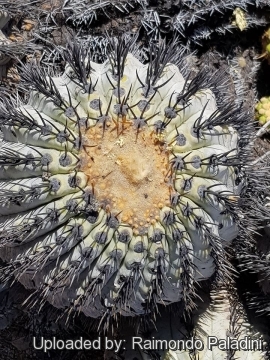 Copiapoa tenebrosa, Chile, Jannuary 2018 (Copiapoa tenebrosa) Photo by: Raimondo Paladini
Copiapoa tenebrosa, Chile, Jannuary 2018 (Copiapoa tenebrosa) Photo by: Raimondo Paladini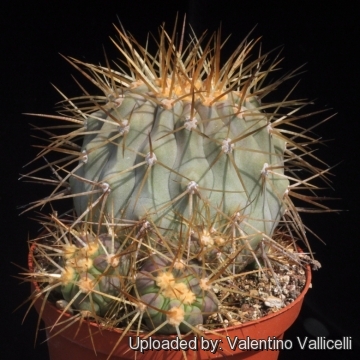 Copiapoa cinerea var. tenebrosa (Copiapoa tenebrosa) Photo by: Valentino Vallicelli
Copiapoa cinerea var. tenebrosa (Copiapoa tenebrosa) Photo by: Valentino Vallicelli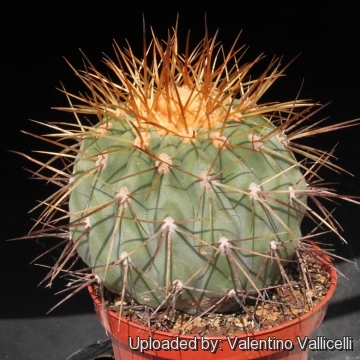 Copiapoa cinerea var. tenebrosa (Copiapoa tenebrosa) Photo by: Valentino Vallicelli
Copiapoa cinerea var. tenebrosa (Copiapoa tenebrosa) Photo by: Valentino Vallicelli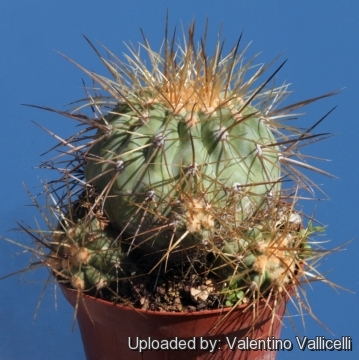 Copiapoa cinerea var. tenebrosa (Copiapoa tenebrosa) Photo by: Valentino Vallicelli
Copiapoa cinerea var. tenebrosa (Copiapoa tenebrosa) Photo by: Valentino Vallicelli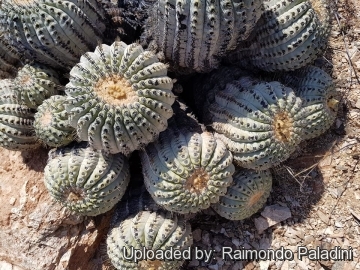 C. cinerea and C. tenebrosa grows in the same area and sometimes it is difficult to separate one species from another. (Copiapoa tenebrosa) Photo by: Raimondo Paladini
C. cinerea and C. tenebrosa grows in the same area and sometimes it is difficult to separate one species from another. (Copiapoa tenebrosa) Photo by: Raimondo Paladini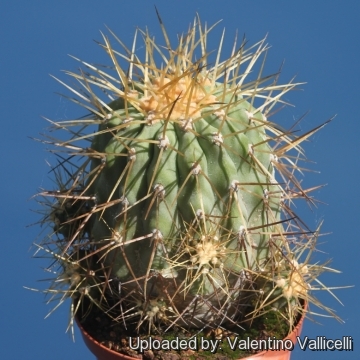 Copiapoa cinerea var. tenebrosa (Copiapoa tenebrosa) Photo by: Valentino Vallicelli
Copiapoa cinerea var. tenebrosa (Copiapoa tenebrosa) Photo by: Valentino Vallicelli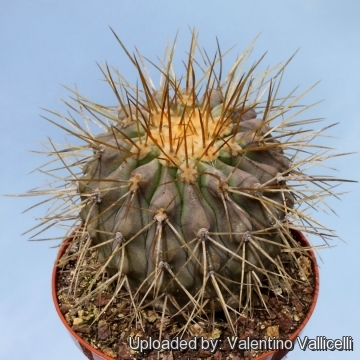 Copiapoa cinerea var. tenebrosa (Copiapoa tenebrosa) Photo by: Valentino Vallicelli
Copiapoa cinerea var. tenebrosa (Copiapoa tenebrosa) Photo by: Valentino Vallicelli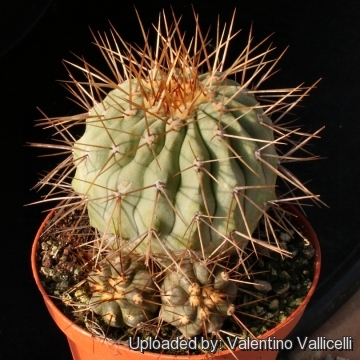 Copiapoa cinerea var. tenebrosa (Copiapoa tenebrosa) Photo by: Valentino Vallicelli
Copiapoa cinerea var. tenebrosa (Copiapoa tenebrosa) Photo by: Valentino VallicelliCultivation and Propagation: Considering that Copiapoa tenebrosaSN|1362]]SN|1362]] comes from a habitat with an extremely arid climate, they are remarkably tolerant of pot culture, but susceptible to overwatering. They requires also an appropriate air circulation. Copiapoas are summer grower species easy to cultivate
Growth rate: This is a slow growing cactus kept for the beauty of its form that will make clumps given the best conditions.
Soils: It likes very coarse mineral cactus mix soil, but can become too elongated if compost is too rich.
Repotting: Use pot with good drainage.
Watering: It requires light but regular waterings in summer, but let the soil mix dry between waterings, but do not overwater (Rot prone), it must be strictly kept dry throughout the winter quiescent period since it is very sensitive to any moisture excesses keep dry in winter.
Fertilization: Feed with a high potassium fertilizer in summer.
Hardiness: Not highly tolerant of a great deal of frost.They need to be kept in a cool place during winter rest and are resistant to light frost if kept on the dry side prior to, and during, cold weather ( they are hardy to -2 C ° C short periods). However some warmth throughout the year will increase the grower's success (minimum 5° to 10°C during rest season).
Exposition: Requires full sun or light shade and careful watering to keep plant compact with strong coloured spines. Tends to bronze in strong light, which encourages flowering and heavy spine production. Light shadow my be useful in the hottest summer days.
Uses: It is an excellent plant for container growing. It always looks good and stays small. It look fine in a cold greenhouse and frame or outdoor in a rockery.
Pests & diseases: It may be attractive to a variety of insects, but plants in good condition should be nearly pest-free, particularly if they are grown in a mineral potting-mix, with good exposure and ventilation. Nonetheless, there are several pests to watch for:
- Red spiders: Red spiders may be effectively rubbed up by watering the infested plants from above.
- Mealy bugs: Mealy bugs occasionally develop aerial into the new growth among the wool with disfiguring results, but the worst types develop underground on the roots and are invisible except by their effects.
- Scales: Scales are rarely a problem. It is wise to treat your whole collection with a systemic insecticide twice a year in spring and autumn.
- Rot: Rot is only a minor problem with cacti if the plants are watered and “aired” correctly. If they are not, fungicides won't help all that much. To prevent rottenness it is also advisable to surround its root neck by very rough sand or grit, this help a fast water drainage.
Propagation: Seeds (or offsets if available), Grafting is often used to speed growth rate and to create a back-up to plants in collection. Seeds germinate in 7-14 days at 21-27° C in spring, remove gradually the glass cover as soon the plants will be well rooted (ca 1-2 weeks) and keep ventilated, no full sun for young plants!
Your Photos
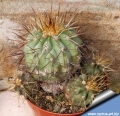
by Valentino Vallicelli



















